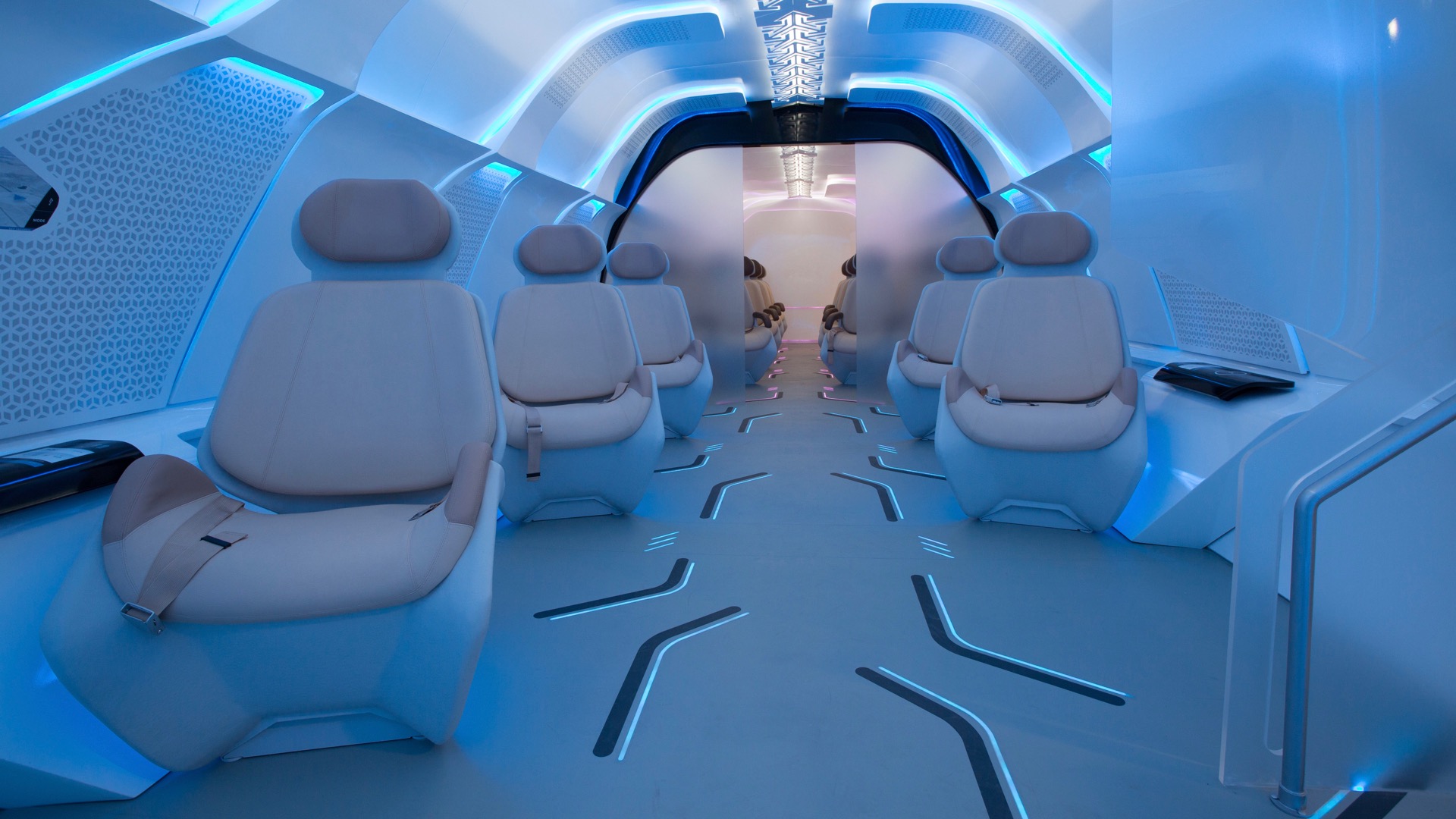

What you see here could be the interior of the fastest BMW ever. The German automaker’s Designworks consultancy designed a prototype “passenger capsule” for Virgin Hyperloop One, the Richard Branson-controlled startup trying to make Elon Musk’s Hyperloop dream a reality.
The capsule was designed for a proposed Hyperloop connecting Dubai and Abu Dhabi. BMW expects a fully-operational version to reach speeds of up to 1,080 kph (671 mph), allowing passengers to travel between the two cities in as little as 12 minutes. Despite the speeds involved, the interior of the capsule is more luxury lounge than fighter-jet cockpit.
Designers faced the challenge of making passengers feel comfortable in a tube with no windows. It’s also expected that passengers will have to be seated for the entire trip, BMW noted. First-class passengers at least get adjustable leather seats with individual touchscreens. They can also adjust the lighting around their seats, including shifting the lighting from blue to pink. The first-class seats are also heated and ventilated. We don’t want to know what economy looks like.
Floor lighting helps to brighten up the cabin, and designers incorporated references to traditional Arabic patterns. The seatbelts look remarkably basic for a vehicle that will supposedly reach speeds of over 600 mph, likely with hard acceleration and deceleration on either side.
Between its talks with the government of the United Arab Emirates and a recent demonstration for Saudi leaders, it seems Virgin Hyperloop One really wants to build its first Hyperloop in the Middle East (although it is eyeing India as well). But swanky BMW-designed prototypes aside, the technology is still very much unproven, and it’s unclear how Virgin Hyperloop One will address issues like emergency evacuation and motion sickness. The passenger capsule’s cabin won’t look so classy coated in vomit.